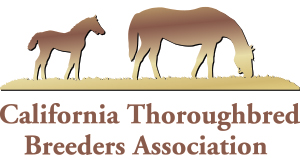By Dick Jerardi, DRF.com
The Pennsylvania Derby was run on Labor Day from 1990 to 2009, a nice race for 3-year-olds that had very little national juice. It was too close to the Travers and too far from the Breeders’ Cup to attract the best horses in the division.
Prior to that 20-year stint on Labor Day, the Pennsylvania Derby had first been run on Memorial Day from 1979-84 and then in mid-September, late September, or early October from 1985-89.
Once slot-machine money started to kick in when the machines went live in late 2006, an opportunity arose for Parx and its signature race to become national players. Management had the money to attract the big boys, but it was never going to happen on Labor Day, even with the purse raised to $1 million.
The decision was made in 2010 to move the Pennsylvania Derby to later in September, a month after the Travers and six weeks before the Breeders’ Cup. A bonus system was instituted in 2011 to give an incentive to the connections of any horse who won a Triple Crown race, the Haskell, or the Travers to run in the Pennsylvania Derby.
The race went on local television in 2011. In 2012, the Cotillion, a new Grade 1 race, was moved to Pennsylvania Derby Day to give Parx an “event” to build around.
That year, the Travers dead-heat winners (Alpha and Golden Ticket) traveled south to run in the Pennsylvania Derby. Last year, the top two runners in another photo-finish Travers (Will Take Charge and Moreno) came to Parx. Will Take Charge won the race and went on to become the first Pennsylvania Derby winner to be named champion 3-year-old male.
The timing of the race, the purse, and the bonus had given Parx a chance to attract the “big” horse. This year, the track got the biggest horse of all.
Since the race was moved four years ago, there is no doubt that the most popular and accomplished 3-year-old is California Chrome: a six-race winning streak earlier this year; wins in the Santa Anita Derby, Kentucky Derby, and Preakness; and less than two lengths from the Triple Crown when fourth in the Belmont Stakes.
When California Chrome got his post-Triple Crown break at Harris Farms in the San Joaquin Valley, the Pennsylvania Derby had its opening. The colt simply was not going to be ready for any of the other major summer 3-year-old stakes. The only issue was geography. In a perfect world, trainer Art Sherman would rather not have to put California Chrome on a plane for the only race he would run prior to the Nov. 1 Breeders’ Cup Classic.
But the race at Parx simply made too much sense – the timing, the purse, and the $200,000 in bonuses that Sherman and the owners will share. Essentially, California Chrome will be heavily favored to win $800,000: the $600,000 for winning and the $200,000 for coming out of the starting gate. The decision to come east really wasn’t that complicated.
It was either that or run in the $300,000 Awesome Again Stakes on Sept. 27 at Santa Anita against older horses for a winner’s share that would be less than the bonus.
“Santa Anita said, ‘We know the $100,000 that you and the owners will get made your decision,’ ” Sherman told me last week. “I told them, ‘It sure as hell helped.’ ”
On Sept. 20, Parx Racing, once Keystone and then Philadelphia Park, is scheduled to host its first Kentucky Derby winner. Spectacular Bid made the final start of his 2-year-old season in the 1978 Heritage Stakes at Keystone. Smarty Jones made the first two starts of his career at Philadelphia Park, his home track. The Chapmans and trainer John Servis had actually planned to skip the 2004 Travers and run Smarty Jones in that year’s Pennsylvania Derby, but the colt was retired a few weeks before the race.
So, Sept. 20 will be the biggest day not just in the 40-year history of Parx but in the history of Pennsylvania racing. California Chrome will be the story, but he won’t be the only story. The $1 million Cotillion is definitely getting Kentucky Oaks winner Untapable, probably three-time Grade 1 winner Sweet Reason, and possibly Coaching Club American Oaks and Alabama winner Stopchargingmaria. The track will get every bit the event it was hoping for when the races were joined up in 2012.
By next year, the Pennsylvania Derby is likely to join the Cotillion as a Grade 1 race. When you attract the eventual 3-year-old champion male and the Derby and Preakness winner in consecutive years, committees notice. With California Chrome running, awareness of the race will increase dramatically for owners, trainers, and fans. That was the whole idea when the Pennsylvania Derby was moved from Labor Day. In Year 5 of the Great Move, the Pennsylvania Derby has hit a home run.

